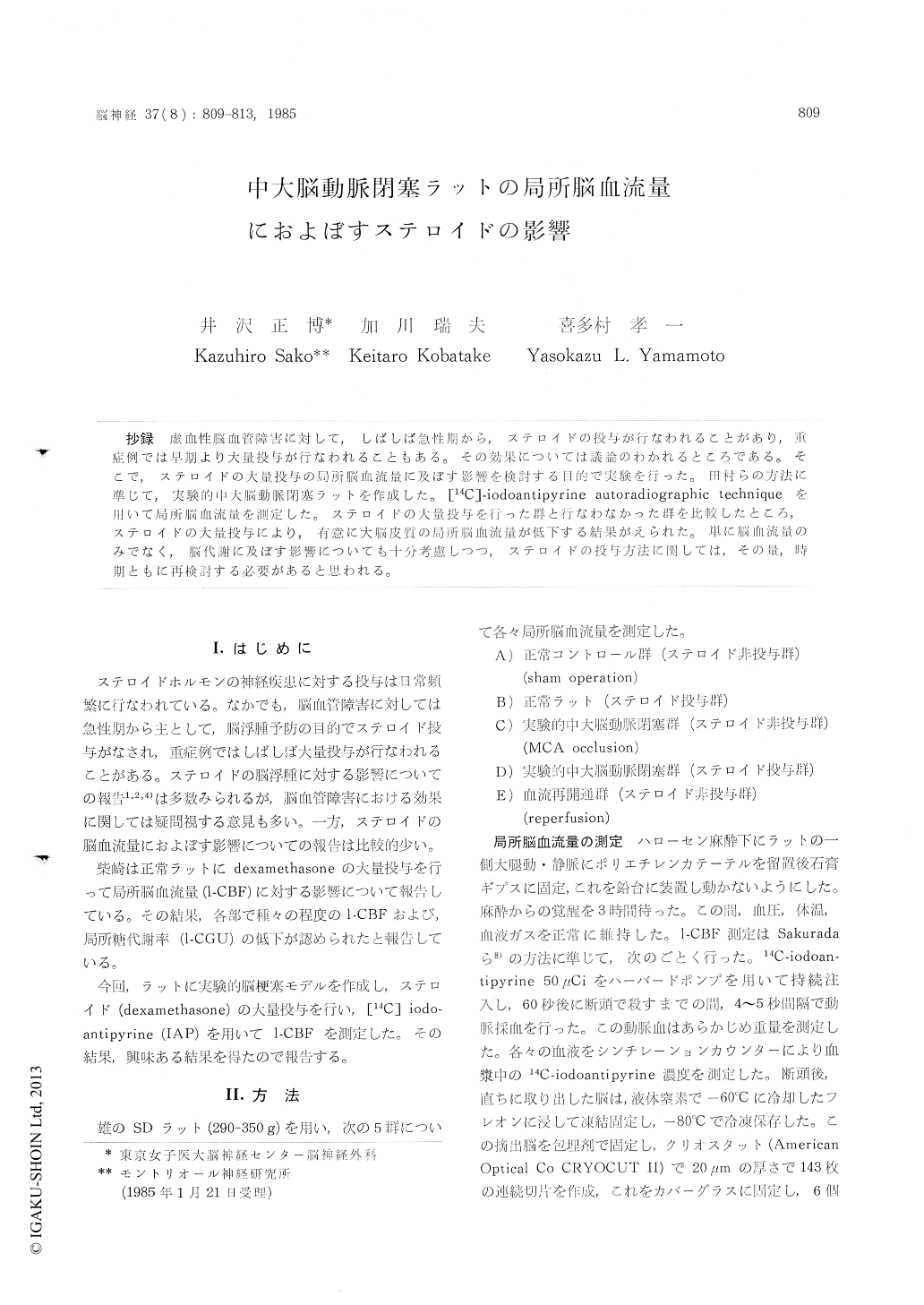Japanese
English
- 有料閲覧
- Abstract 文献概要
- 1ページ目 Look Inside
抄録 虚血性脳血管障害に対して,しばしば急性期から,ステロイドの投与が行なわれることがあり,重症例では早期より大量投与が行なわれることもある。その効果については議論のわかれるところである。そこで,ステロイドの大量投与の局所脳血流量に及ぼす影響を倹討する目的で実験を行った。田村らの方法に準じて,実験的中大脳動脈閉塞ラットを作成した。[14C]—iodoantipyrine autoradiographic techniqueを用いて局所脳血流量を測定した。ステロイドの大量投与を行った群と行なわなかった群を比較したところ,ステロイドの大量投与により,有意に大脳皮質の局所脳血流量が低下する結果がえられた。単に脳血流量のみでなく,脳代謝に及ぼす影響についても十分考慮しつつ,ステロイドの投与方法に関しては,その量,時期ともに再検討する必要があると思われる。
Changes of local cerebral blood flow (l-CBF) were estimated by autoradiographic techniques in middle cerebral artery occlusion rats given a large dose of (3mg/kg) dexamethasone. The sensory-motor, parietal, auditory and olfactory cortices showed a significant reduction (greater than 25%) of l-CBF. In MCA occlusion with large dose dexamethasone group, ischemic corteces showed significant reduction from the only MCA occlusion group (highest 36%). There was no significant reduction of l-CBF in the deep structures.
The effects of dexamethasone on drains with various pathologies have been studied both clin-ically and experimentaly with many kinds of techniques.
These effects are now being reevaluated. Still controversial however, is the mechanism that determines whether dexamethasone has beneficial, non-beneficial, or harmful effect. This study may help us to unravel the mechanism of steroid effects, as well as the relationship between corticosteroid and central nervous system.

Copyright © 1985, Igaku-Shoin Ltd. All rights reserved.


